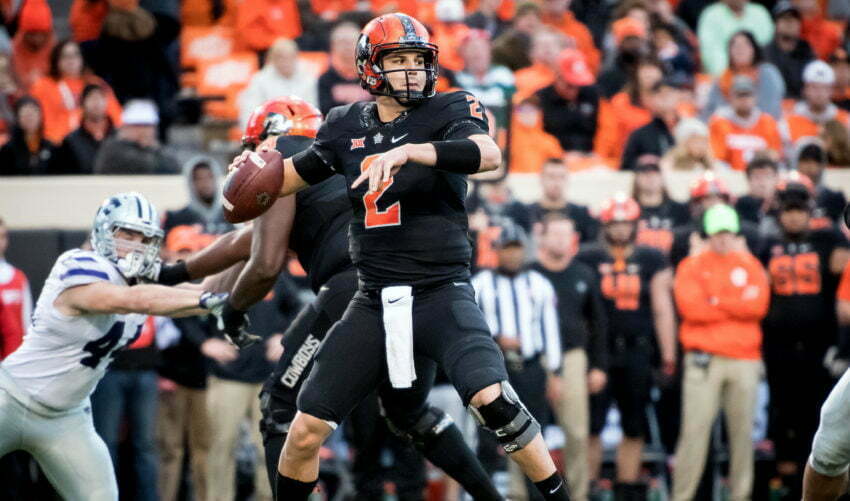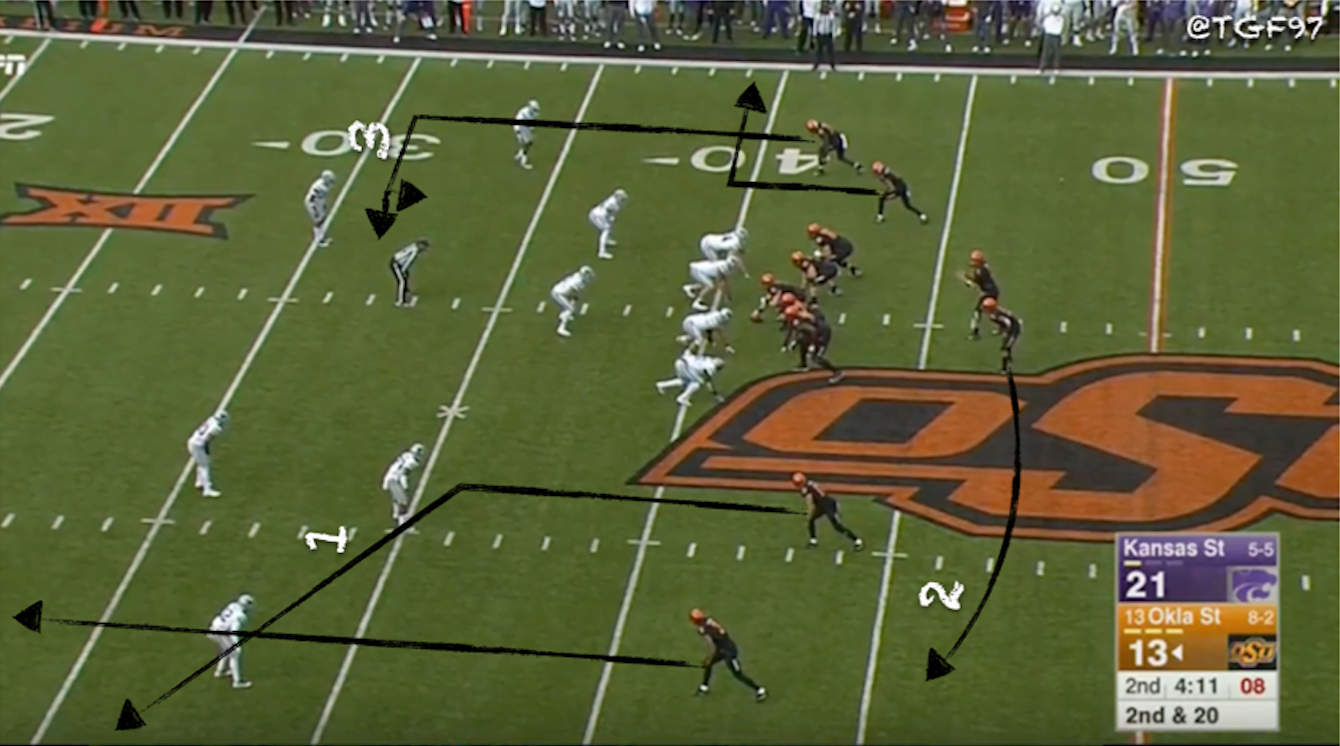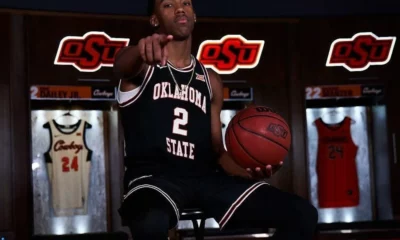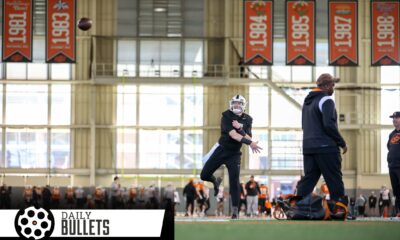Football
Chalk Talk: Analyzing Mason Rudolph’s Biggest Flaw

Mason Rudolph had an up-and-down performance last Saturday in the Cowboys’ 45-40 loss against the Kansas State Wildcats.
Rudolph threw for 425 yards and three touchdowns along with two (technically three) interceptions at a 60 percent completion rate. He was able to pull the Cowboys back into the game in the fourth quarter, but ultimately couldn’t finish it off. Additionally, he had some costly throws, specifically in the second quarter, that made fans in the stands audibly groan. In today’s Chalk Talk, we’ll look at what went wrong, and how the loss exposed some of his weakness as a quarterback.
Rudolph’s biggest flaw is that he locks onto receivers and will often ignore his progressions. On a side note, he said something that seriously perplexed me about his understanding of coverages two weeks ago.
“I thought give Tyron a chance there in the hole [versus] cover 2 double cloud, I think it was,” Rudolph said recently. “Just a play you draw up there in a situation like that.” That doesn’t make sense. Remember, this was the play where he threw to Tyron Johnson on the sideline. Against cover 2, known as middle of the field open (MOFO), you attack the middle of the field. It’s against middle-of-the-field-closed (MOFC) defenses that you attack the sidelines as far as deep routes are concerned.
Anyway, back to the article. Here’s an example of what we’re talking about. The play below is one OSU runs 5-8 times a game. The play, known as slot cross, is an air raid staple. Every good quarterback understands the progression of the play. First, you read the slot cross. If that’s not open, you go to the trailing dig read, where the receiver can run full speed or shuffle to open space depending on the coverage. Third, you move to your check down, which in this case is the speed out on the trips side.

The quarterback also has a backside out and choice route by the back. This is known as the “tagged” part of the play. The Cowboys will often tag this out-choice combination, but they can also add other tags as well. In this example, the deep out is known as the “alert” or “peek” route. This means if the other team shows a defense that isolates the corner with the receiver, the quarterback can ignore the crosser concept and look to the out with the back’s route as his check down.
Alerts are often deep routes, like posts or streaks, but the Cowboys love to run the deep out with guys like James Washington and Marcell Ateman isolated on an island. This, however, is not the quarterback’s primary read. This cannot be stressed enough. It’s only to be thrown against certain defenses. The quarterback’s primary focus should be actually reading the concept and reacting accordingly — not to make his alert or back-side tags his focus. The elite quarterbacks are able to peek at his alert and then quickly move to his actual progression.
Unfortunately, Rudolph has a tendency of completely ignoring the concept, or design, of the play and locking onto another receiver, which is sometimes his alert. Or, in some cases, he’ll lock onto a receiver and not see wide open receivers, which are supposed to be his first read. This has come back to hurt him this year, but it was especially evident against the Wildcats.
Notice in this example how Rudolph reads the concept. His eyes go toward Dillon Stoner on the slot cross and then to Justice Hill. If he would have gone cross-to-dig-to-out, he would have seen Jalen McCleskey all alone on the sideline.
Here’s another example. Rudolph locks onto Washington without really reading the defense. You can see how Rudolph’s helmet shows where he’s looking. He could have looked quickly at Stoner, and we’ll never know for sure from this angle, but if he would have watched him a little longer he could have hit him in stride in the middle of the field for a big gainer.
The third and final example was off a “sail” concept. The progression for this play is the same of any other high-low read: Look at the deep receiver, go to the short receiver and then look backside. In this case, the deep post is the deep route, the flare is the short route and the dig is the backside route. The backside route combination can be treated as the primary read against certain coverages, but as previously mentioned, shouldn’t be the first focus.

If you watch the video, it appears that Rudolph watches Washington the whole time, and he throws an awful ball at that. This play was a good example of Kansas State’s defense covering everything deep knowing that Rudolph will frequently look for those routes first.
We’ve talked about Rudolph’s indecisiveness and a lack of reading progressions in the past. In fact, it was the subject of our Chalk Talk from last year’s contest against Kansas. Rudolph has all the physical tools to succeed at the next level, and to think we at Pistols Firing don’t want him to succeed is foolish. But he has some serious things he needs to fix to become a more complete quarterback.

-

 Football3 days ago
Football3 days agoFour-Star Quarterback Adam Schobel Commits to Oklahoma State, Flips from Baylor
-

 Hoops3 days ago
Hoops3 days ago‘Keep Turning Over the Rocks’: Looking at the Portal Landscape as Lutz Looks to Solidify His First OSU Roster
-

 Hoops3 days ago
Hoops3 days agoFour-Star Signee Jeremiah Johnson Reaffirms Commitment to Oklahoma State after Coaching Change
-

 Daily Bullets3 days ago
Daily Bullets3 days agoDaily Bullets (Apr. 23): Pokes Land Four-Star Quarterback, Retain Talent from Mike Boynton Era






